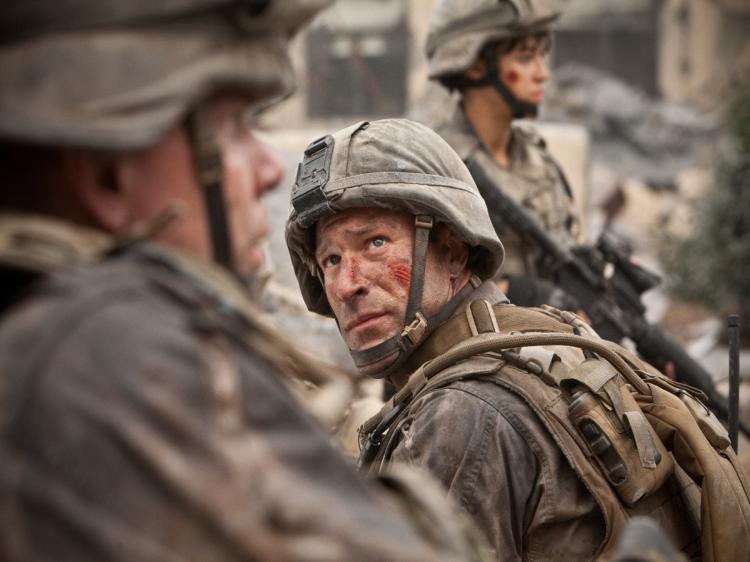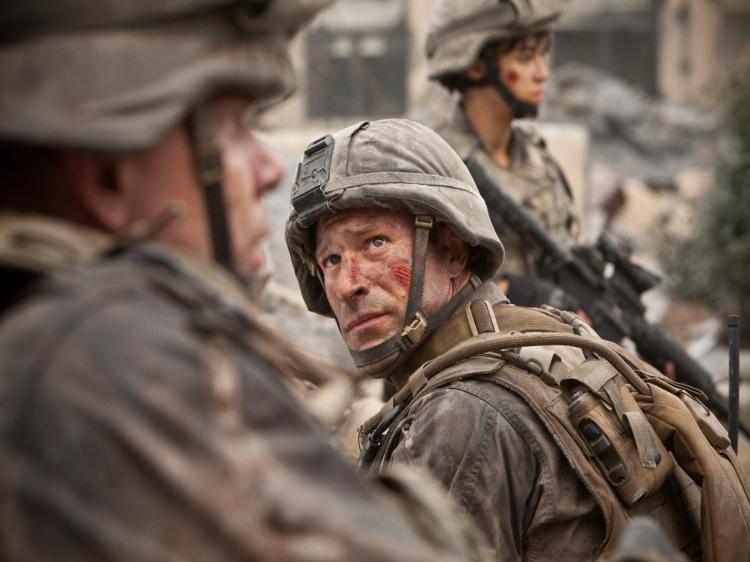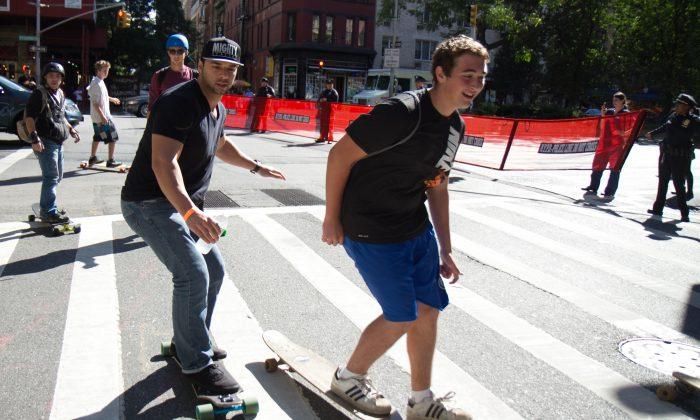The story begins with a beautiful California day and a morning run along the sandy ocean blue. Nothing seems out of the ordinary as we are introduced to Staff Sergeant Michael Nantz (Aaron Eckhart), icing a sore knee in his twilight years.
Nantz served for 20 years in the Marines and recently decided that he’s too old to keep playing the game. But just as his papers are signed and he is walking off the base, his veritable call-to-action arrives.
Astrological observatories are detecting meteor-like objects, and major cities across the world are reporting the arrival of more. What are these oddities, and why wasn’t NASA able to detect them until now? Evacuation orders have been given for civilians to vacate their homes, under military supervision.
Accepting his fate, Nantz suits up. But will there be a conflict with his new superior officer, fresh-out-of-the-academy 2nd Lt. Martinez (Ramon Rodriguez)?
A man with a well-refined character, throughout the film Nantz switches between insightful male patriarch figure and heroic action-oriented leader; he is a stoic yet sensitive Marine. Unfortunately, he has a bad reputation for losing soldiers under his command and placing his own survival as the most important objective. Can Nantz win the support of his men and simultaneously win the battle against this unknown threat?
The enemy in Battle: Los Angeles is an unfamiliar force that appears both organic and robotic, rooted in a fresh science-fiction-based design. The mystery that surrounds its origin is left in the shadows, yet with nothing lost in the cinematic process.
The movie’s focus on the lone squadron of warriors as they struggle to rescue civilians, escape from West L.A., and defeat their newfound foes is captivating all the way to the end.
Nantz receives his orders to rescue civilians holed up in a Santa Monica police station. With three hours to complete the objective before a citywide missile strike, can his squadron rescue the civilians? Furthermore, can his men make it there in one piece?
One of the most striking features of “Battle: Los Angeles” is that it brings a violent and life-altering war to American soil. The portrayal of Los Angeles is extremely realistic and accurate, from citywide shots to individual street signs, maps, and public transport. The concrete jungle comes to life through death and destruction amid an ever-expanding cityscape.
As a Los Angeles resident, I found it rather odd to watch my own home city turn into a smoldering crater. Ironically, the iconic theater I watched the film in was transformed into a mound of burning rubble. Watching the entire City of Angels go up in red-hot flames, including famous landmarks and downtown towers, was a bit surreal.
Read More . . . cinematography, battle scenes
Directed by Jonathan Liebesman, the cinematography is excellent and the camera moves along in perfect tempo. In fact, the camera is almost never still. Gunfire, explosions, mountains of fire surrounded by organic flesh and metallic doom—the camera sways like a human with each shot, including in-barrel scope perspectives, onboard helicopters and in tight quarters, with the enemy waiting around every corner.
Liebesman said in the press notes, “We really wanted every audience member to feel like they are one of our Marines.” The destructible battlefield feels alive, and it’s like the characters on the screen could die at any moment, and many of them do.
Supported by Tech Sergeant Santos (Michelle Rodriguez), Corporal Harris (Ne-Yo), Corporal Imlay (Will Rothhaar), along with a bevy of others, Nantz and his squadron plow their way through the streets, alleys, houses, freeways, and even sewers of West Los Angeles’s most well-known areas.
The actors spent three weeks in boot camp in preparation for the role, and their professional training appears authentic, as they wear 40-pound vests full of equipment and run through the embattled streets of L.A. with guns blazing.
Music by composer Brian Tyler provides heart-pounding bass lines in sync with the on-screen action. While at times generic, it actually serves well amid the unfolding plot, detailed special effects, and bone-crunching sound.
Dialogue can be a bit tongue-in-cheek on occasion, but it’s all within character. Stereotypical scenarios are deftly tiptoed around, providing a fresh story with unique interactions, although one can’t help but feel reminded of “Independence Day” near the climax.
The film’s tagline is “The battle begins,” implying that this is the first of many films to come.
Why they chose to start with Los Angeles is anybody’s guess, as it’s never explained. But if they can keep up the same intensity and level of polish as the first one, I’ll gladly see them all. Guns, bravery, personal sacrifice, and an unconquerable human spirit—Battle: Los Angeles has everything you can ask for in an action sci-fi theater experience.
[etRating value=“ 4.5”]





